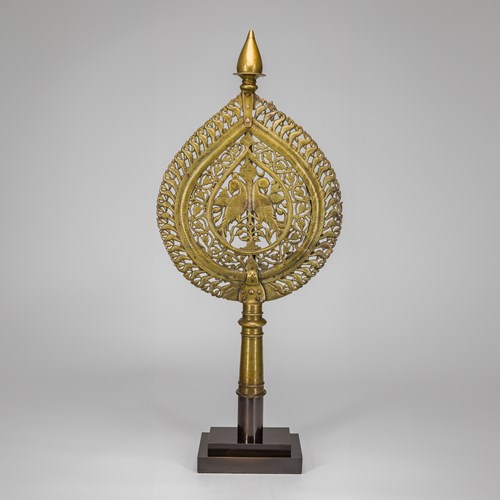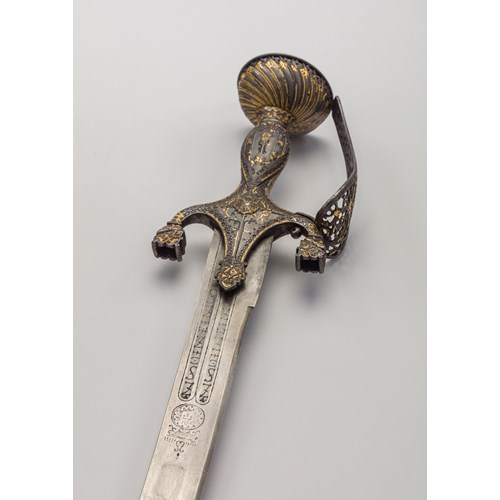Marketplace
Dagger (Pesh-kabz) with Mother-of-Pearl Handle
Dagger (Pesh-kabz) with Mother-of-Pearl Handle
Period 18th century
Origin India, Gujarat
Medium Steel and mother-of-pearl
Dimension 37 cm (14⁵/₈ inches)
This dagger has a straight-edged blade with a T-shaped cross-section, and is decorated with mother-of-pearl plaques around the hilt. The plaques create a chevron pattern and are riveted to the wooden frame, while two pairs of silver bosses highlight either side of the pommel area.
Pesh-kabz is a Persian term meaning ‘fore grip’ and these types of daggers can have straight or curved blades. Designed to pierce through chain mail, they originated in Iran and then spread to Northern India and Central Asia. For similar examples to our dagger see The Metropolitan Museum of Art, New York, Accession Number 36.25.976a-c; and The Al-Sabah Collection, Kuwait, Accession Number LNS 1617 M, and illustrated in Kaoukji, p. 261, fig. 96.
Stock no.: A4836a
Pesh-kabz is a Persian term meaning ‘fore grip’ and these types of daggers can have straight or curved blades. Designed to pierce through chain mail, they originated in Iran and then spread to Northern India and Central Asia. For similar examples to our dagger see The Metropolitan Museum of Art, New York, Accession Number 36.25.976a-c; and The Al-Sabah Collection, Kuwait, Accession Number LNS 1617 M, and illustrated in Kaoukji, p. 261, fig. 96.
Stock no.: A4836a
Period: 18th century
Origin: India, Gujarat
Medium: Steel and mother-of-pearl
Dimension: 37 cm (14⁵/₈ inches)
Literature: Kaoukji, S. Precious Indian Weapons and Other Princely Accoutrements, Thames & Hudson, London, 2017.
More artworks from the Gallery


 with Mother-of-Pearl Handle_T638839371438778571.jpg?width=2000&height=2000&mode=max&scale=both&qlt=90)





 Silver Web_T638206163549784171.JPG?width=500&height=500&mode=pad&scale=both&qlt=90&format=jpg)
